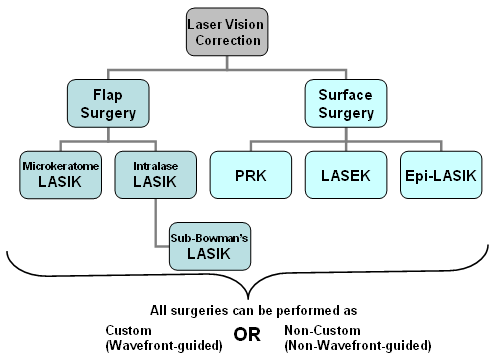How Does SMILE Eye Surgery Contrast To LASIK And PRK?
How Does SMILE Eye Surgery Contrast To LASIK And PRK?
Blog Article
Uploaded By-McNamara Vincent
If you have actually been taking into consideration SMILE eye surgical treatment, you may question how it stacks up against LASIK and PRK. Each treatment has its very own collection of benefits and considerations. From quicker healing times to possible dangers, there are essential distinctions you ought to be aware of before choosing. Understanding these distinctions will help you make an informed choice that straightens with your details needs and expectations. Curious to recognize even more about just how these procedures contrast carefully? Continue exploring to gain a comprehensive understanding of SMILE, LASIK, and PRK.
SMILE Eye Surgical Treatment Review
If you're thinking about SMILE eye surgical procedure, you'll find it to be a minimally intrusive treatment with a quick recuperation time. During SMILE (Little Incision Lenticule Extraction), a laser is utilized to produce a small, exact cut in the cornea to get rid of a small piece of tissue, reshaping it to correct your vision. This differs from LASIK, where a flap is created, and PRK, where the outer layer of the cornea is completely gotten rid of.
Recommended Studying of the vital benefits of SMILE is its minimally intrusive nature, resulting in a faster recovery process and much less pain post-surgery. The recuperation time for SMILE is relatively fast, with numerous clients experiencing improved vision within a day or two. This makes it a preferred choice for those seeking a practical and reliable vision modification treatment. Furthermore, SMILE has actually been shown to have a reduced danger of dry eye disorder compared to LASIK, making it a favorable option for people worried concerning this prospective negative effects.
Distinctions Between SMILE, LASIK, and PRK
When comparing SMILE, LASIK, and PRK eye surgeries, it is necessary to understand the distinct strategies used in each procedure for vision improvement.
SMILE (Tiny Cut Lenticule Removal) is a minimally intrusive procedure that includes producing a little laceration to remove a lenticule from the cornea, reshaping it to deal with vision.
LASIK (Laser-Assisted In Situ Keratomileusis) involves creating a slim flap on the cornea, making use of a laser to reshape the underlying tissue, and then rearranging the flap.
PRK (Photorefractive Keratectomy) gets rid of the outer layer of the cornea before improving the tissue with a laser.
The main distinction hinges on the means the cornea is accessed and treated. SMILE is flapless, making it a good choice for individuals with slim corneas or those involved in contact sporting activities. LASIK supplies rapid aesthetic recovery because of the flap creation, yet it may pose a greater danger of flap-related difficulties. PRK, although having a much longer recuperation period, stays clear of flap-related concerns entirely.
Understanding these variations is crucial in selecting the most suitable treatment for your vision improvement needs.
Benefits And Drawbacks Comparison
To examine the advantages and downsides of SMILE, LASIK, and PRK eye surgical treatments, it's important to take into consideration the specific advantages and potential restrictions of each procedure. SMILE surgery uses the benefit of a minimally intrusive treatment, with a smaller sized cut and possibly quicker recuperation time contrasted to LASIK and PRK. It likewise lowers the threat of completely dry eye post-surgery, a common negative effects of LASIK. Nevertheless, SMILE might have limitations in dealing with greater degrees of nearsightedness or astigmatism contrasted to LASIK.
LASIK surgical procedure supplies quick aesthetic healing and marginal pain during the treatment. It's extremely reliable in treating a wide variety of refractive mistakes, including myopia, hyperopia, and astigmatism. Yet, LASIK carries a threat of flap complications, which can affect the corneal structure.
PRK eye surgery, while not as preferred as LASIK, prevents developing a corneal flap, reducing the risk of flap-related complications. It appropriates for people with thin corneas or uneven corneal surface areas. Nonetheless, PRK has a longer recuperation time and might include extra discomfort throughout the healing process.
Conclusion
So, when it pertains to selecting in between SMILE, LASIK, and PRK, think of it like picking the excellent pair of shoes. cataract surgery outcomes resembles a sleek, comfortable set of tennis shoes - fast and simple.
LASIK is more like fashionable high heels - showy and quick, however with some potential risks.
PRK is like sturdy hiking boots - reliable and durable, but requiring a little bit more effort and time.
Eventually, the most effective selection depends on your specific requirements and preferences.
